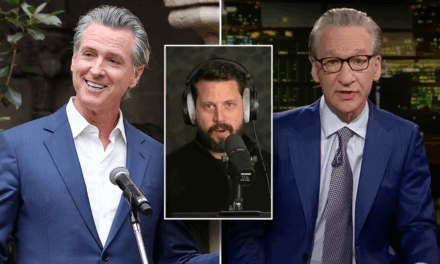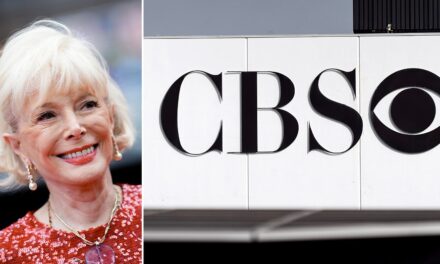In a transformative moment for the White House press landscape, the inclusion of ‘new media’ representatives at official briefings is breaking down the long-standing barriers that have traditionally defined journalism in the political arena. This shift, initiated to promote diverse voices, is beginning to disrupt the often rigid narrative crafted by established media outlets.
The inclusion of non-traditional media outlets in these high-profile briefings signals a significant acknowledgment from the Biden administration that the media landscape is no longer solely dominated by conventional sources. Where once only established reporters from major newspapers and television networks occupied front-row seats, now, digital news platforms and social media influencers are starting to take their place.
The term ‘new media’ encompasses a wide spectrum of platforms, including blogs, podcasts, independent news websites, and social media channels. These allow for rapid dissemination of information and encourage a two-way conversation between the audience and the journalist, something that doesn’t always occur with traditional media forms.
Advocates for new media see this change as long overdue. They argue that traditional journalism practices can often feel one-sided and disconnected from everyday Americans’ experiences. By bringing in diverse voices, the White House aims to foster communication that reflects a broader spectrum of public sentiment, beyond what mainstream media can offer.
Critics, however, express concern over this shift, arguing that it undermines the credibility and authority of established journalism. They point to potential issues with misinformation, claiming that allowing less-regulated platforms to sit at the same table as recognized news organizations could diminish the overall quality of journalism that the White House relies upon.
The Biden administration’s decision to invite new media representatives rests on the idea that the public’s trust in traditional media has eroded in recent years. A study conducted by the Pew Research Center indicated that public confidence in journalists has seen a significant decline. Many Americans feel that mainstream media does not adequately represent their views or address their concerns. The aim of including new media is to re-engage skeptical audiences and restore faith in the dissemination of information.
Against this backdrop, the recent briefings have sparked a heated conversation about journalistic standards and the role that new media can play in shaping accurate narratives. Some of the new media participants emphasize their commitment to rigorous reporting, combating the stereotype that independent outlets prioritize sensationalism over substance.
Take, for example, platforms like The Young Turks or independent podcasters like Joe Rogan. Their influence and reach demonstrate a departure from traditional news consumption. These platforms often engage a younger demographic that is steering away from cable news in favor of more relatable and digestible content. By bringing these voices into the briefing room, the administration is acknowledging a critical shift in how information is consumed today.
Moreover, many new media journalists leverage social media to interact directly with their audience, allowing them to solicit questions in real-time which can be posed at these briefings. This level of engagement can help demystify the political process for citizens who often feel alienated from it. New media can be viewed as a bridge connecting the political world to the everyday public, allowing for more meaningful dialogue about pressing issues.
As part of this shift, some White House officials are taking an active role in reaching out to audiences through new media channels, understanding that the barriers of communication must be dismantled to effectively relay critical information. This also acknowledges the changing face of journalism, where immediacy often supersedes established protocols.
Nonetheless, the complexities of integrating new media within official channels remain a process fraught with potential pitfalls. In a digital age where misinformation can spread like wildfire, the stakes are high. Recent events have shown that the rapid cycle of news can sometimes overshadow the facts, leading to confusion and distorted narratives.
Prominent media figures have voiced their concerns regarding the integrity of information shared during briefings. They argue that prioritizing new media could lead to the dilution of journalistic standards, where sensationalism and clickbait become prioritized over investigative reporting. This raises important questions about how we define reliable journalism and who gets to participate in shaping the national dialogue.
The administration has emphasized that the goal is an inclusive dialogue that reflects a variety of opinions and perspectives. It’s an attempt to rebuild trust while responding to the public’s demand for authenticity and accountability from sources of information. However, critics continue to caution against the potential compromise of professionalism in the name of engagement.
A recent briefing highlighted these tensions perfectly, as representatives from established news networks expressed frustration seeing their seats shared with contributors from less formal backgrounds. The dynamic was palpable, creating an atmosphere of anxiety among the traditional press corps that is used to having a monopolistic grip over the news cycle.
In responses from figures in new media, there has been an effort to counter such critiques by showcasing the quality of their reporting. Their claims of earned credibility are increasingly relevant in this context, especially as they build solid followings and emerge as trusted sources of information for many. Engaging with their audiences on platforms like TikTok or Instagram provides a fresh narrative approach that some argue is essential for reaching today’s viewers.
For this new wave of journalists, the pressure has intensified to distinguish themselves as not merely agents of commentary but as sources of factual and trustworthy information. They face the challenge of building their reputation in a landscape where many newer outlets have been associated with partisanship and sensationalism.
As the landscape of journalism continues to evolve, so too does the relationship between the White House and the press. This ongoing dialogue raises critical questions about accountability, transparency, and the future of media in American democracy. The real implications of integrating new media into the White House press pool will likely unfold over time, as the administration and reporters alike navigate these uncharted waters.
In conclusion, while the White House’s decision to incorporate ‘new media’ into briefings certainly shakes up the status quo, it also invites a broader conversation about the role of journalism today. As the nation grapples with misinformation in the digital age, the push for diverse perspectives and voices is essential to ensure that all Americans feel heard and represented in the democracy they inhabit. The future remains uncertain, but it is apparent that how America interacts with information continues to transform, bringing both challenges and opportunities for all sides involved.
































